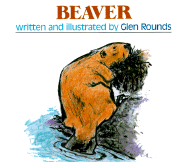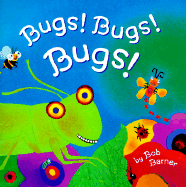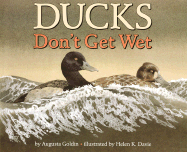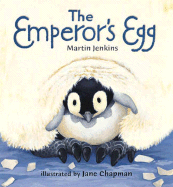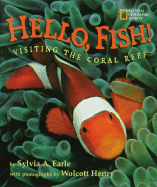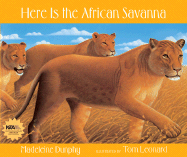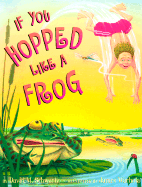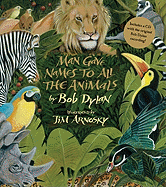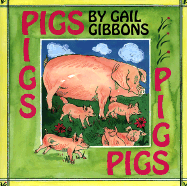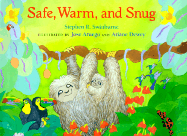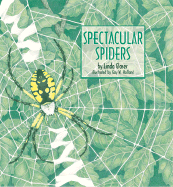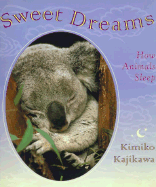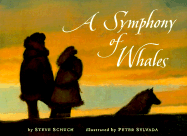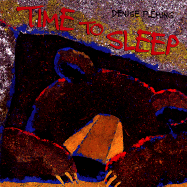Collection Analysis Report
for Read-Aloud Science Books
This report provides data analyses into the titles on this list to help support your efforts to put the right book in each reader's hands.
This report is organized by Collection Analysis by Genre, Cultural, and Curricular Areas, Quantitative Measures, and Qualitative Measures.
Explore all of TeachingBooks
Sign in and enjoy.
Collection Analysis by Genre, Cultural, and Curricular Areas
For the 22 books on this list, please find an analysis revealing the quantity of titles associated with genre, cultural, and curriculum classifications. Additionally, please find the "Not Represented" section where you can click to identify other titles to potentially add to this list.
We hope this collection analysis tool helps you achieve the variety and differentiation of books that you want for your reading opportunities.
(22 of 22 titles have genres, curricular, or cultural experiences.)
- Science (22 books)
- Nonfiction (16 books)
- English Language Arts (13 books)
- Picture Book (6 books)
- Art (2 books)
- Math (2 books)
- STEAM (2 books)
- Adventure (1 books)
- Beginning / Early Reader (1 books)
- Concept Book (1 books)
- Music (1 books)
- Poetry (1 books)
- Realistic Fiction (1 books)
Genre, Curricular, and Cultural Experience categories are assigned by TeachingBooks based on professional reviews, authoritative sources, and company guidelines.
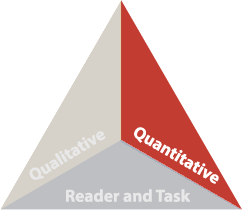 Quantitative Measures
Quantitative Measures
For 18 of 22 titles that have known Lexile levels, below is the low, high, and average Lexile® for the books in this list. We hope these data points, along with the crosswalk to other measures, provide insights into the variety and differentiation of this collection.
Lexile® Average: 629 (Range: 330 - 1070)
Reading Level and Grade Band Crosswalk
| Grade Band | Lexile® | ATOS | Degrees of Reading Power® | Flesch-Kincaid | Fountas & Pinnell | Reading Maturity | SourceRater |
|---|---|---|---|---|---|---|---|
| 2-3 | 420-820 | 2.75-5.14 | 42-54 | 1.98-5.34 | I-P | 3.53-613 | 0.05-2.48 |
| 4-5 | 740-1010 | 4.97-7.03 | 52-60 | 4.51-7.72 | O-V | 5.42-7.92 | 0.84-5.75 |
| 6-8 | 925-1185 | 7.00-9.98 | 57-67 | 6.51-10.34 | U-Z | 7.04-9.57 | 4.11-10.66 |
| 9-10 | 1050-1335 | 9.67-12.01 | 62-72 | 8.32-12.12 | Z+ | 8.41-10.81 | 9.02-13.93 |
Key: Purple highlight represents average.
Source: National Governors Association for Best Practices and Council of Chief State School Officers.[1]
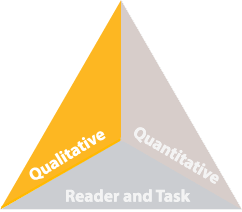 Qualitative Measures (BETA)
Qualitative Measures (BETA)
For 3 of 22 titles that have known qualitative measurements, this graph reveals the aggregated low, high, and average qualitative measures for the books in this list. We hope this range of information shows the variety and differentiation of this collection.
Qualitative Text Complexity Ranges
= low and high range of submitted values = average of submitted values
- Slightly
- Moderately
- Very
- Exceedingly
Qualitative measures for each title are determined by crowd sourced results from professional educators who complete the literary or informational text complexity rubrics. These are relatively new on TeachingBooks so only a small percentage of all the titles have currently been evaluated. Perhaps you can help?
Instructional Materials Summary
Below please find a summary of available multimedia texts and instructional materials that enrich and deepen the discussion of the titles on this list.
- 4 Videos
- 4 Book Readings
- 16 Lesson Plans
- Total of 97 resources
Details for Each Book
Below are the titles on Booklist's "Read-Aloud Science Books". If you wish to see the curricular areas, genres, Lexile® and Qualitative measures, along with the collection of ready-to-use instructional materials, go online to TeachingBooks at: https://school.teachingbooks.net/QLFF77O
About Reptiles: A Guide for Children
by Cathryn P. Sill and John Sill Cathryn P. Sill and John Sill
Part of the About... Series
- Genres: Nonfiction
- Curricular Areas: English Language Arts, Science, STEAM
- Lexile: 390
- Year Published: 1999
Baby Whale's Journey
by Jonathan London and Jon Van Zyle
- Genres: Picture Book
- Curricular Areas: Science, English Language Arts
- Lexile: 860
- Year Published: 1998
Bats
by Gail Gibbons
- Grades Used: 2
- Genres: Nonfiction
- Curricular Areas: Science
- Lexile: 630
- Year Published: 1999
Qualitative Measures:
- Meaning: Slightly Complex
- Text Organization: Slightly Complex
- Use of Visual Features: Slightly Complex
- Conventionality: Slightly Complex
- Vocabulary: Slightly Complex
- Sentence Structure: Slightly Complex
- Subject Matter Knowledge: Slightly Complex
- Intertextuality: Slightly Complex
Beaver
by Glen Rounds
- Genres: Nonfiction
- Curricular Areas: English Language Arts, Science
- Lexile: Unknown
- Year Published: 1999
Qualitative Measures:
View all instructional resources and text complexity results for BeaverBugs! Bugs! Bugs!
by Bob Barner
- Genres: Nonfiction
- Curricular Areas: English Language Arts, Science
- Lexile: Unknown
- Year Published: 1999
Ducks Don't Get Wet
by Augusta Goldin and Helen K. Davie
- Genres: Nonfiction, Beginning / Early Reader
- Curricular Areas: English Language Arts, Science
- Lexile: 580
- Year Published: 1989
The Emperor's Egg
by Martin Jenkins and Jane Chapman
- Grades Used: 2, 3, 4
- Genres: Nonfiction
- Curricular Areas: Science
- Lexile: 670
- Year Published: 1999
Qualitative Measures:
- Meaning: Moderately Complex
- Text Organization: Moderately Complex
- Use of Visual Features: Slightly Complex
- Conventionality: Slightly Complex
- Vocabulary: Moderately Complex
- Sentence Structure: Moderately Complex
- Subject Matter Knowledge: Moderately Complex
- Intertextuality: Slightly Complex
Hello, Fish!
by Sylvia A. Earle and Wolcott Henry
- Genres: Nonfiction
- Curricular Areas: Science
- Lexile: 940
- Year Published: 2001
Qualitative Measures:
View all instructional resources and text complexity results for Hello, Fish!Here Is the African Savanna
by Madeleine Dunphy and Tom Leonard
- Genres: Nonfiction
- Curricular Areas: English Language Arts, Science
- Lexile: 720
- Year Published: 1999
If You Hopped Like a Frog
by David M. Schwartz and James Warhola
- Genres: Nonfiction
- Curricular Areas: English Language Arts, Science, Math, Art
- Lexile: 740
- Year Published: 1999
Man Gave Names to All the Animals
by Bob Dylan and Jim Arnosky
- Genres: Picture Book
- Curricular Areas: English Language Arts, Music, Science
- Lexile: 380
- Year Published: 1979
The Moonflower
by H. Peter Loewer and Jean Loewer
- Genres: Picture Book
- Curricular Areas: Science, English Language Arts
- Lexile: 1070
- Year Published: 2004
My Mother Talks to Trees
by Doris Gove and Marilynn H. Mallory
- Genres: Picture Book
- Curricular Areas: Science, English Language Arts
- Lexile: 610
- Year Published: 1999
Qualitative Measures:
View all instructional resources and text complexity results for PigsRed-Eyed Tree Frog
by Joy Cowley and Nic Bishop
- Grades Used: pk, k, 1, 2
- Genres: Nonfiction
- Curricular Areas: English Language Arts, Science
- Lexile: 490
- Year Published: 1999
Qualitative Measures:
- Meaning: Slightly Complex
- Text Organization: Moderately Complex
- Use of Visual Features: Moderately Complex
- Conventionality: Moderately Complex
- Vocabulary: Very Complex
- Sentence Structure: Moderately Complex
- Subject Matter Knowledge: Very Complex
- Intertextuality: Moderately Complex
Safe, Warm, and Snug
by Stephen R. Swinburne, Ariane Dewey, and Jose Aruego
- Genres: Nonfiction, Poetry
- Curricular Areas: English Language Arts, Science
- Lexile: Unknown
- Year Published: 1999
Sounds All Around: Our Nearest Star
by Wendy Pfeffer and Holly Keller
- Genres: Nonfiction, Concept Book
- Curricular Areas: Science, STEAM
- Lexile: 540
- Year Published: 1999
Spectacular Spiders
by Linda Glaser, Ronald Ed. Glaser, and Gay Holland
- Genres: Nonfiction
- Curricular Areas: Science
- Lexile: 590
- Year Published: 1998
Spots: Counting Creatures from Sky to Sea
by Carolyn Lesser and Laura Regan
- Genres: Nonfiction
- Curricular Areas: Math, Science
- Lexile: Unknown
- Year Published: 1999
Qualitative Measures:
View all instructional resources and text complexity results for SpotsSweet Dreams: How Animals Sleep
- Genres: Nonfiction
- Curricular Areas: Science
- Lexile: 330
- Year Published: 1999
Qualitative Measures:
View all instructional resources and text complexity results for Sweet DreamsA Symphony of Whales
by Steve Schuch and Peter Sylvada
- Genres: Adventure, Realistic Fiction, Picture Book
- Curricular Areas: Science
- Lexile: 600
- Year Published: 2001
Time to Sleep
- Genres: Picture Book
- Curricular Areas: Science, English Language Arts, Art
- Lexile: 410
- Year Published: 1997
Explore all of TeachingBooks
Sign in and enjoy.





